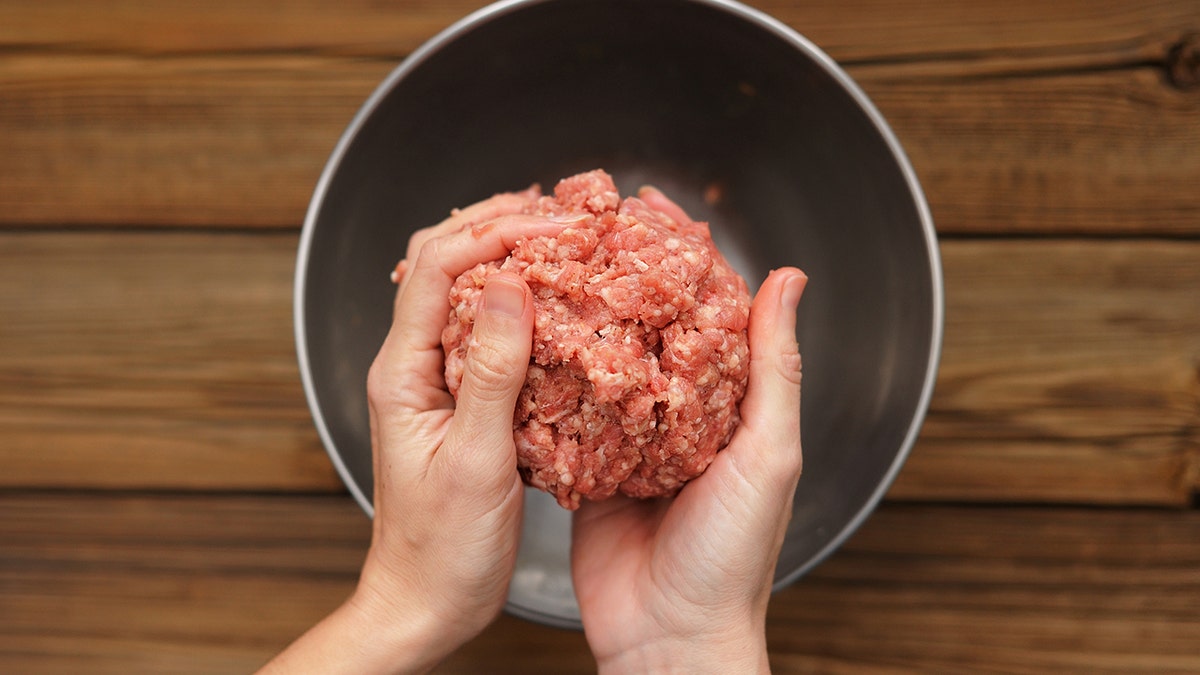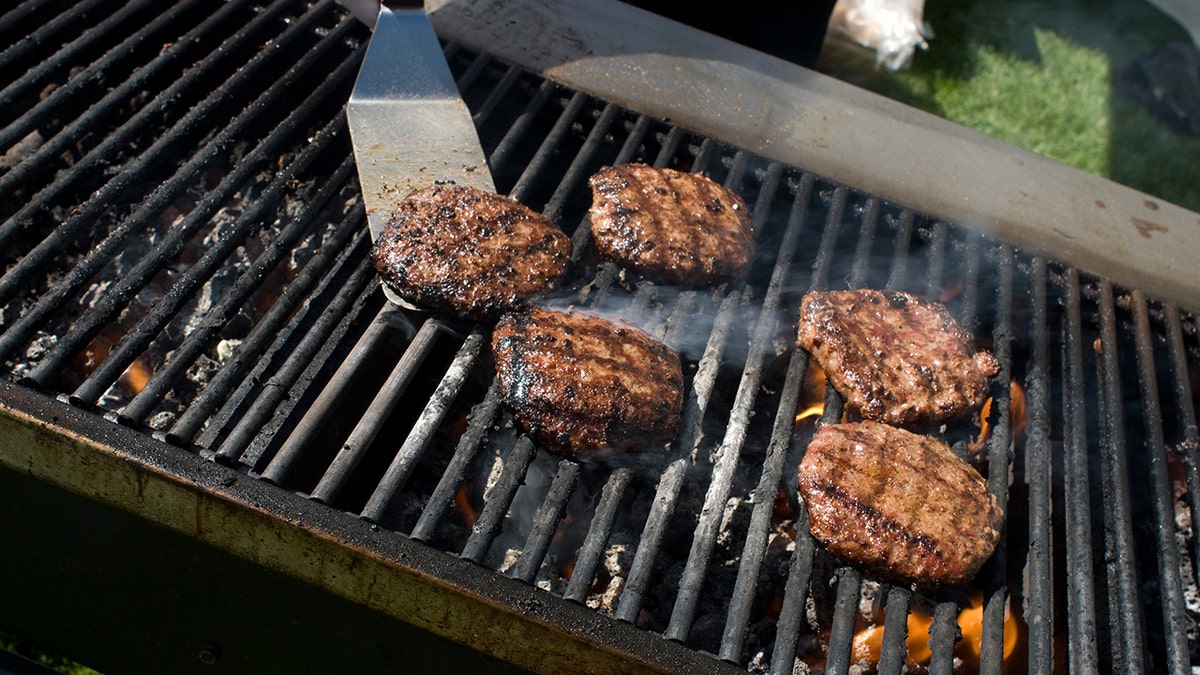
For the sake of your cookout guests, don't screw up your burgers. (iStock)
Plain or piled with toppings, a great burger is the king of any cookout.
If you’ve ever volunteered to wield the tongs, you know the pressure’s on. The pitfalls of a seemingly simple burger are legion: too dry, overdone, underdone, oddly tough, falling apart, charred outside but somehow raw in the middle — and there’s only so much ketchup can cover up.
Want to grill a tender, juicy burger with just the right blush of pink in the middle? Avoid these common mistakes cooks make when grilling burgers.
Mistake #1: Relying on pre-made patties
Picking up a bag of pre-made burger patties at the grocery store is definitely tempting, especially if you’re pressed for time. But the best results start with the freshest possible meat. You’ll also have more control over the type and fat content of your meat (more on that in #2).
Besides, it’s ridiculously simple to make burger patties from scratch — check out our step-by-step guide.
Mistake #2: Grabbing the wrong pack of meat
You can make delicious burgers from ground turkey, ground chicken or even black beans, like these. But when it comes to making the best-ever burger, we like to stick to the classic: ground beef.
More From Taste of Home
The real trick here is to choose ground beef with a higher fat content. The leaner the beef, the drier your burger will be. Ground sirloin is the leanest, then ground round, ground chuck and lastly, ground beef. The package will tell you the lean-to-fat ratio. 85-15 is too low for a tasty burger; it’ll be too dry. But 70-30 makes a super juicy, indulgent burger, and it’s our favorite to cook with.
Mistake #3: Over-handling the meat
We love adding seasonings, spices and extra ingredients to boost the flavor of our burgers. (Garlic powder and chopped onions are my faves.) But over-mixing and mashing the meat will turn it into a dense, dry puck.
An easy trick to avoid overworking: Combine any add-ins in a separate bowl first. Then, gently work the mixture into the ground meat by pressing it in with two forks. Stop as soon as the ingredients look evenly dispersed.
Mistake #4: Skipping the easy trick to making perfect patties
If you’ve ever shaped a meatball or worked extensively with ground beef, you’ll recognize this situation. Things begin smoothly as you mold the meat into shape. But then, gradually, globs of the greasy pink stuff start sticking to your fingers, making it harder and harder to manage. Pretty soon you can’t form anything into shape.
To avoid the mess, start by dampening your hands with water. This’ll prevent the meat from clinging as you shape the burgers.

Dampen your hands before shaping the patties and the meat won't cling to your fingers. (iStock)
Mistake #5: Making patties too petite
Ground meat will shrink as it sizzles on the grill. The more fat that’s in the meat, the more it’ll shrink.
To prevent burgers from becoming pint-sized, plan ahead. Shape the raw patties to be slightly larger than the bun. You also don’t want the patties to be too thin or too fat. Too fat, and the outside will char before the inside cooks. Too thin, and the patty will lose too much moisture, becoming dry fast.
We like to shape our ours into 4-inch rounds that are about 1/2-inch thick. The beef will plump slightly as it cooks.
Reader Tip: “When shaping hamburger patties, I poke a hole through the center of each one with my index finger. The burgers cook faster this way, and the outside doesn’t get overcooked before the center is done. As the burgers cook, the hole almost disappears-it’s barely noticeable when they’re done. This works whether you grill, broil or cook burgers in a skillet.” — Jean K., Golden, Colorado
Mistake #6: Not letting the grill heat up enough
Burgers are best cooked over medium heat. A gas grill will fire up relatively quickly. But if you’re using a charcoal grill, it’s a bit trickier to tell since it takes some time for the charcoal to catch fire and the kettle to warm up.
Gauge the temperature of your grill by following this simple trick: Hold your hand about 4 inches above the coals. If you can keep it there for 4 to 5 seconds (or as my grandma’s old copy of "Joy of Cooking" puts it, “until you can say Mississippi twice”) the grill’s heat is medium. (For more grilling wisdom, check out our guide for using a charcoal grill.)
Mistake #7: Pressing the patties as they cook
We’ve all seen it in movies and on TV — the cook takes his spatula and presses it down on the patties as they cook, releasing a fury of spit and sizzle.
This is a huge mistake. That cook is effectively squeezing out all the meat’s juices, dropping them into the flames below. As satisfying as it looks on screen, don’t do this at home.

Use the spatula only to flip the patties — and don't you dare squeeze those juices into the grill. (iStock)
Mistake #8: Testing for doneness on a timer (or by eye)
You should invest in a good instant-read thermometer. (Psst: You can pick one up for cheap in the gadget aisle of most supermarkets.) Not only will you feel like a pro as you wield it, but it’ll give you more confidence as you cook.
Here’s our rule: Use a timer for guidance, and a thermometer for a final check.
Grill the burgers for 5 to 6 minutes on each side. Then take the temperature. Use tongs to hold the burger while inserting the metal spear of the thermometer horizontally through the patty. Make sure the thermometer is positioned in the center. Beef, pork and lamb burgers should reach 160 degrees, while chicken or turkey burgers should be cooked to 165 degrees.
Avoid these burger blunders and you’ll be the hero of your next holiday cookout and backyard barbecue. Just remember to take a break from the heat and sneak in a round or two of cornhole.
